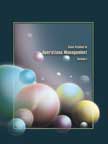Waiting Line Management at Tirumala, Large Pilgrimage Centre in India
|
ICMR HOME | Case Studies Collection
» Operations Case Studies 
Custom Search
Please note: |
|||||||
Waiting Queue at TirumalaManaging Darshan Waiting QueueDarshan was the prime purpose for which a pilgrim visited the temple. The output i.e.the number of people could get darshan per day was fixed and was a combination of the processing rate and the duration available for darshan. But the pilgrims' arrival followed stochastic process. As of 2005, the processing rate of 40 pilgrims per minute translated to 2,400 pilgrims an hour. As darshan used to be allowed for 22 hours per day (2 hours was allotted for daily maintenance and other mandatory rituals), a processing capacity was 52,800 per day. This led to (52800 x 365) = 19.272 million capacity a year. When the number of arrivals per hour was greater than 2,400, people would have to wait. The actual waiting time was proportional to the number in the queue. As the pilgrim arrival process was stochastic and followed specific peaks such as certain peak weeks and peak days. Unpredictable and unreasonable waiting time for the darshan was the result. According to experts, if the arrival continued at a higher rate, the result would be a constant increase in the waiting time... New Proposals to Reduce Waiting Line"The way to manage the queues is by either reducing the inflows or increasing the rate of outflows or both. Estimate the average number of pilgrims waiting for darshan and the average waiting time of pilgrims in queues. Inflows can be controlled by prior booking to a large extent," explained A Kesavarao, retired IIM-Bangalore professor. A few experts suggested that another way would be to increase the number of channels of entry and exit into the main temple complex and setting up parallel queue (2-3 instead of a single) lines that would enable more pilgrims to have a darshan. For instance, 72,000 pilgrims could have darshan in a day (20 hours-72,000 seconds) with a darshan time of one second in a single line but the numbers could go up to 140,000 if two lines were organized... Future ChallengeExperts estimated that considering the growing popularity of Tirumala, the number of visitors to the temple would reach 0.2-0.3 million pilgrims every day in a couple of years from 2012. They questioned, “Mayhem is sure to follow...
Exhibits
Exhibit I: Flow Chart of a typical pilgrim to Tirumala 
Custom Search
|
Case Studies Links:-
Case Studies,
Short Case Studies,
Simplified Case Studies.
Other Case Studies:-
Multimedia Case Studies,
Cases in Other Languages.
Business Reports Link:-
Business Reports.
Books:-
Text Books,
Work Books,
Case Study Volumes.







